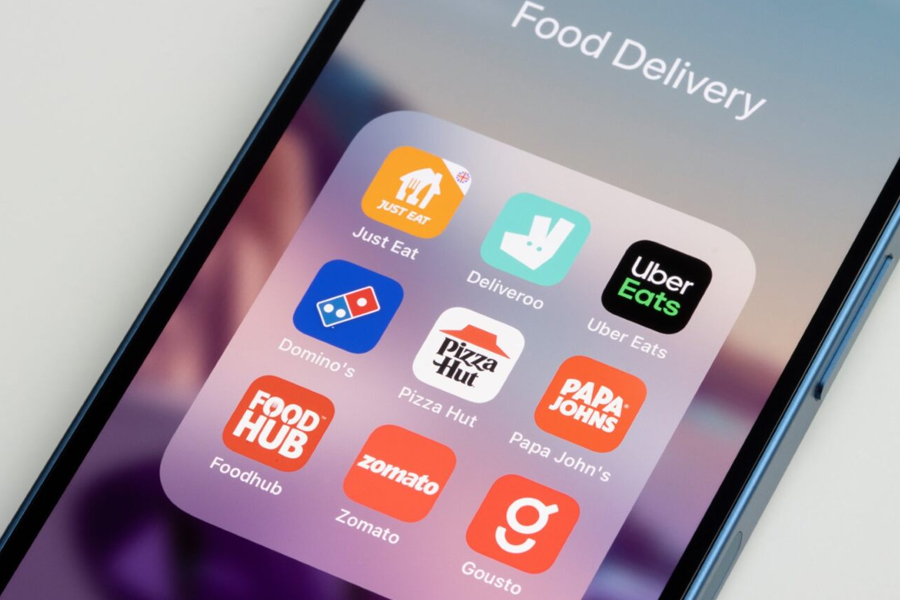Sunny Chhina of Fat Pizza and Village Pizza’s Katy Habibian understand pizza delivery better than most. So, where do they stand on modern methods?
GANGSTA LUV
They’re sweeping through the foodservice delivery sector like a tidal wave. High-profile ad campaigns and earworm-style jingles infect the consumer psyche. And when you’ve got a reported £5 million-plus marketing budget to entice Snoop Dogg, you know the game has changed. But let’s face it… third party aggregators have evolved to make money – and they’re not everyone’s cup of tea!
The three biggest players in the UK are Just Eat, Uber Eats and Deliveroo – in the US, DoorDash are kingpins. Of course, the pandemic accelerated their success, and no one could have predicted that. But the reality today is that pizza or takeaway delivery businesses have a decision to make. Commission fees vary greatly, from around 20-40%. This inevitably puts pressure on smaller independents, whose profit margins are tighter than ever. Another key factor is control and being able to understand who your customer is and what they want. Something very valuable is being handed over – data.
MYSTERY SHOPPERS
Many operators feel like they have to be on aggregator apps, as there is now a straightforward opportunity for rivals to get a market share. But managers have no idea who is buying their product – customer data and loyalty numbers disappear into the ether. Not knowing your audience means personalised offers are impossible.
“We’ve had aggregators since 2009,” said Sunny Chhina, founder of The Fat Pizza. “We went through an explosion of their use from around 2012 (Just Eat), then the others from 2019 (Deliveroo and Uber Eats).
“But while there is always a divide on using third party couriers, they are here to stay – even though the takeaway boom appears to be over. Ultimately, pizza is delivery focused, relative to other cuisine brands. And while aggregators won’t share details of customer behaviour, it’s much easier than before to get local recognition – and independents can compete with the big boys, as long as they’re good!”
It’s important to remember that Covid-19 changed the restaurant sector forever. Contactless payment, coupled with no-contact delivery options, became the norm, while aggregators helped keep many businesses afloat.
The question is: what happens next?
CONSUMER DECISIONS
The challenge for smaller firms is being heard – and effectively competing on an uneven playing field. “The balance has shifted to the bigger brands, because while independents initially got good exposure, they’re up against the likes of Domino’s on the app, which can decimate sales,” said Chhina.
But Just Eat believe there is opportunity for everyone. “We work with more than 70,000 connected partners in the UK, many of which are family run or independently owned businesses. We find that having bigger brands on the platform can help attract a wider customer base to our smaller partners,” a company spokesperson said.
“The market as a whole has changed – and not just because of Covid,” said Katy Habibian of Village Pizza. “Food, supermarkets and takeaways are all just expected to be clicked – it’s like the Amazon model. Back in the day, we went to the greengrocer for fruit and the butcher for meat. As time has evolved, we all now go to one digital supermarket. But is it fair for small business to trade alongside companies such as McDonald’s, while paying roughly the same percentage to aggregators? The smaller fish are put out of business first.”
With aggregators also moving into produce, aren’t they effectively ‘eating themselves’ by saturating the foodservice sector? Just Eat say no.
“By expanding into grocery and convenience, we can help people access everything from takeaways, cupboard essentials and fresh groceries in minutes. We view this expansion as a chance to build relationships with new customers and opportunities for existing ones.”
TAKING RESPONSIBILITY
It appears that the ‘faceless’ aspect of the aggregator is ultimately its biggest downside, with two-way communication and accountability certainly a grey area.
Ultimately, everything is about the consumer – they decide whether an idea continues to thrive. So, bad publicity around reckless and seemingly unaccountable delivery drivers, plus workers’ rights, doesn’t help. And the delivery landscape will probably look different again in five years. Innovative food delivery platforms, the emergence of crypto and harnessing the power of AI are a guarantee of that.
“The world is a changing place and there is a need for these apps,” said Habibian. “But responsibility needs to be taken – the same as a store owner does.”
While having Katy Perry as a brand ambassador is all very well, aggregators still have to work hard to get everyone singing from the same hymn sheet.


